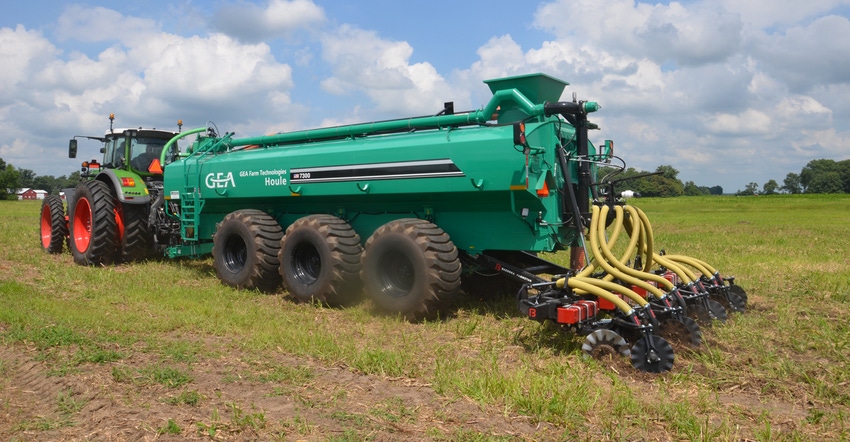
Big livestock operations produce lots of manure. In fact, some producers sell it to neighbors. More people are recognizing the value of manure in high-yield corn production systems.
If you want to get the most value from manure, Jim Camberato suggests understanding the basics of manure management and applying common sense. “It can be a good source of nutrients, but you need to handle it correctly and account for application timing and method, among other things,” says Camberato, a Purdue University Extension soil fertility specialist.
Camberato shared basic manure management guidelines virtually with Indiana Certified Crop Advisers recently. Here are seven tips based upon his suggestions.
7 tips
1. Start with a manure analysis. This is a must, both to determine the amount of nitrogen and phosphorus in the manure you’re injecting or applying, Camberato says. Manure from various species and growth stages of those species varies widely in nutrient content. Unless you know how many pounds of each nutrient are in the manure, you can’t make accurate calculations.
2. Don’t rely on book values. Especially for phosphorus, send a sample of each type of manure to a lab, and base application rates on actual analyses, he emphasizes. There are publications that may indicate typical analyses for specific types of manure, but your feeding and management practices will determine the nutrient content of your manure.
3. Account for time of application when figuring N potential. Even if you apply 250 units of nitrogen per acre based upon analysis of the manure and the rate you apply, the crop may not see it, Camberato says. The farther away the application is from the time plants will use nitrogen, the greater the chance for loss. For example, an application in the spring before planting may be fairly efficient, but if you applied manure in August or even October of the year before, much of that nitrogen may be gone before the plant needs it.
4. Note injection tends to reduce N losses. If you apply manure on the surface, ammonia can be lost to the air, Camberato says. Placing manure below the surface or incorporating it tends to reduce the amount of N loss.
5. Know weather conditions. When you apply manure and it’s warm and wet for long periods after application, you can figure that a good portion of the nitrogen component within the manure will be lost. Take this into account when figuring how much you can reduce commercial nitrogen rates based on manure applied, Camberato suggests.
6. Watch acidity level. Applying large amounts of manure per acre can increase acidity of the soil, lowering pH, if there is significant nitrogen content. Each pound of nitrogen within the manure contributes to soil acidity. Account for possible impact upon pH when applying manure, Camberato says. The pH level can affect availability of nutrients to the plant, including phosphorus.
7. Apply manure elsewhere if nutrient levels are too high. There are stopping points for applying nutrients, particularly phosphorus, either through manure or commercial fertilizer, Camberato says. Utilize soil tests to monitor P and K levels. Once phosphorus levels reach “very high,” no more application is recommended, including from manure.
About the Author(s)
You May Also Like




